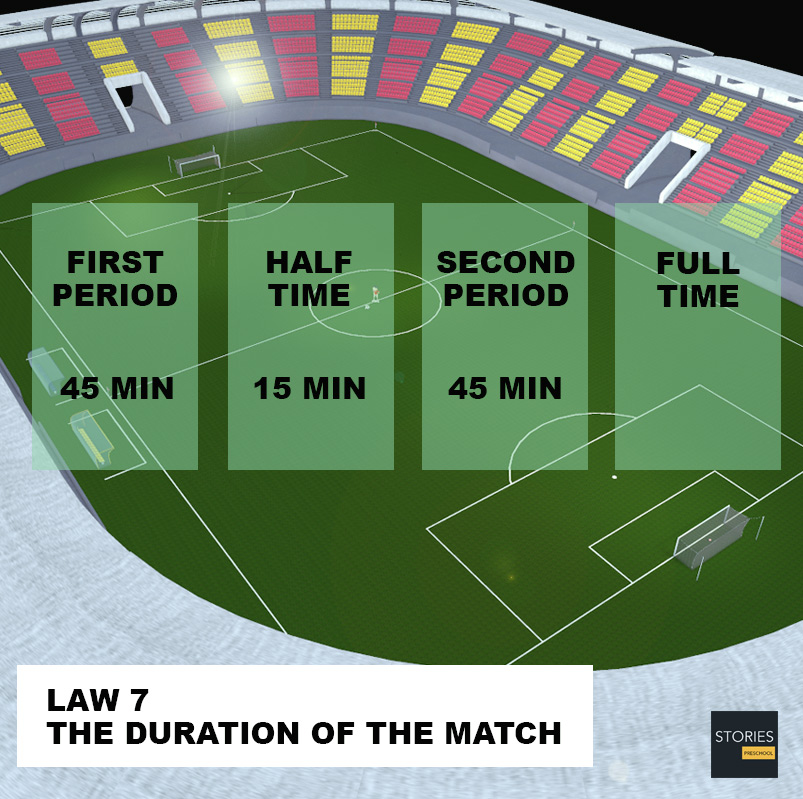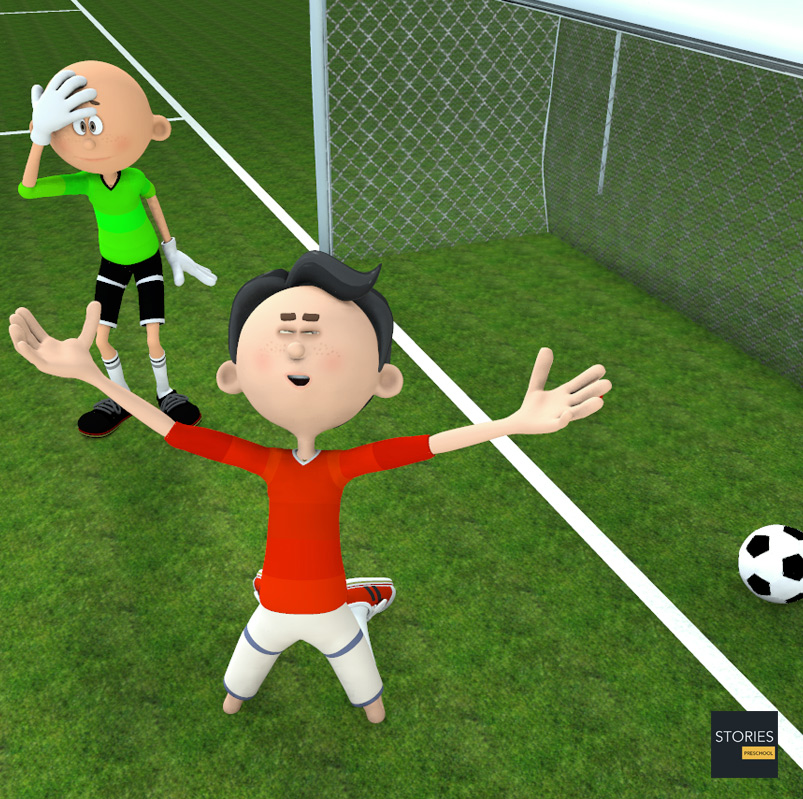Soccer

Duration and Tie-Breaking Methods
A standard adult football match consists of two periods of 45 minutes each, known as halves. Each half runs continuously, meaning that the clock is not stopped when the ball is out of play. There is usually a 15-minute half-time break between halves. The end of the match is known as full-time.

The referee is the official timekeeper for the match, and may make an allowance for time lost through substitutions, injured players requiring attention, or other stoppages. This added time is called additional time in FIFA documents, but is most commonly referred to as stoppage time or injury time, while loss time can also be used as a synonym. The duration of stoppage time is at the sole discretion of the referee.

The referee alone signals the end of the match. In matches where a fourth official is appointed, toward the end of the half the referee signals how many minutes of stoppage time he intends to add. The fourth official then informs the players and spectators by holding up a board showing this number. The signaled stoppage time may be further extended by the referee. Added time was introduced because of an incident which happened in 1891 during a match between Stoke and Aston Villa. Trailing 1–0 and with just two minutes remaining, Stoke were awarded a penalty. Villa's goalkeeper kicked the ball out of the ground, and by the time the ball had been recovered, the 90 minutes had elapsed and the game was over. The same law also states that the duration of either half is extended until the penalty kick to be taken or retaken is completed, thus no game shall end with a penalty to be taken.
In league competitions, games may end in a draw. In knockout competitions where a winner is required various methods may be employed to break such a deadlock, some competitions may invoke replays. A game tied at the end of regulation time may go into extra time, which consists of two further 15-minute periods. If the score is still tied after extra time, some competitions allow the use of penalty shootouts (known officially in the Laws of the Game as "kicks from the penalty mark") to determine which team will progress to the next stage of the tournament. Goals scored during extra time periods count toward the final score of the game, but kicks from the penalty mark are only used to decide the team that progresses to the next part of the tournament (with goals scored in a penalty shootout not making up part of the final score).
In competitions using two-legged matches, each team competes at home once, with an aggregate score from the two matches deciding which team progresses. Where aggregates are equal, the away goals rule may be used to determine the winners, in which case the winner is the team that scored the most goals in the leg they played away from home. If the result is still equal, extra time and potentially a penalty shootout are required.

In the late 1990s and early 2000s, the IFAB experimented with ways of creating a winner without requiring a penalty shootout, which was often seen as an undesirable way to end a match. These involved rules ending a game in extra time early, either when the first goal in extra time was scored (golden goal), or if one team held a lead at the end of the first period of extra time (silver goal). Golden goal was used at the World Cup in 1998 and 2002. The first World Cup game decided by a golden goal was France's victory over Paraguay in 1998. Germany was the first nation to score a golden goal in a major competition, beating Czech Republic in the final of Euro 1996. Silver goal was used in Euro 2004. Both these experiments have been discontinued by IFAB.
SPORTS

RESOURCES
This article uses material from the Wikipedia article "Association football", which is released under the Creative Commons Attribution-Share-Alike License 3.0.
© Stories Preschool. All Rights Reserved.












